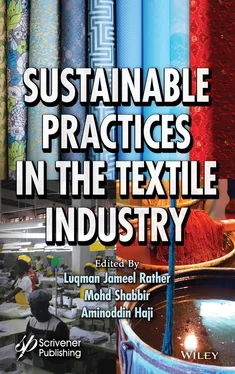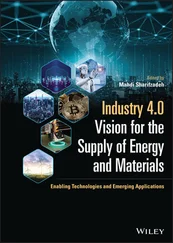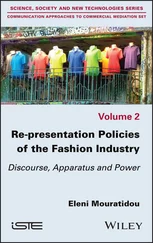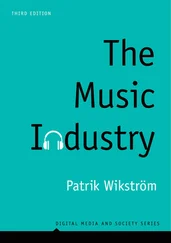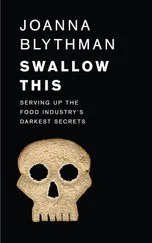Sustainable Practices in the Textile Industry
Здесь есть возможность читать онлайн «Sustainable Practices in the Textile Industry» — ознакомительный отрывок электронной книги совершенно бесплатно, а после прочтения отрывка купить полную версию. В некоторых случаях можно слушать аудио, скачать через торрент в формате fb2 и присутствует краткое содержание. Жанр: unrecognised, на английском языке. Описание произведения, (предисловие) а так же отзывы посетителей доступны на портале библиотеки ЛибКат.
- Название:Sustainable Practices in the Textile Industry
- Автор:
- Жанр:
- Год:неизвестен
- ISBN:нет данных
- Рейтинг книги:5 / 5. Голосов: 1
-
Избранное:Добавить в избранное
- Отзывы:
-
Ваша оценка:
- 100
- 1
- 2
- 3
- 4
- 5
Sustainable Practices in the Textile Industry: краткое содержание, описание и аннотация
Предлагаем к чтению аннотацию, описание, краткое содержание или предисловие (зависит от того, что написал сам автор книги «Sustainable Practices in the Textile Industry»). Если вы не нашли необходимую информацию о книге — напишите в комментариях, мы постараемся отыскать её.
Sustainable Practices in the Textile Industry
Sustainable Practices in the Textile Industry — читать онлайн ознакомительный отрывок
Ниже представлен текст книги, разбитый по страницам. Система сохранения места последней прочитанной страницы, позволяет с удобством читать онлайн бесплатно книгу «Sustainable Practices in the Textile Industry», без необходимости каждый раз заново искать на чём Вы остановились. Поставьте закладку, и сможете в любой момент перейти на страницу, на которой закончили чтение.
Интервал:
Закладка:
3 Colorfastness to Rubbing: the ability to sustain original color of dyed fabrics by abrasion or rubbing.
4 Colorfastness to Perspiration: the ability to not fade when dyed fabric is perspired.
Natural sources provide a large range of color with various shades on textile materials. To use dyed material every day, the color should remain on the fabric in any situation. Therefore, researchers and scientists attempted several trials and found very good results for fastness [102, 103].
1.12 Some Special Characteristics of Naturally Dyed Fabric
1.12.1 Antimicrobial Properties
Textile materials are the carriers of microorganisms such as pathogenic, odor generating bacteria, mold and fungi. Fabric surface is a good growth medium for microorganisms. Microbial growth causes multiple problems to fabric as discoloration, fiber damage, staining and unpleasant odor as well as many skin problems to the weaver. All these problems decrease the quality of fabric and demand of customers. Thus, research led to develop the antimicrobial textile material which carried out extensive work for the sake of seller and buyer. Antimicrobial agent inhibits the growth of microorganism and can be applied to the textile substrates by coating, exhaust, pad–dry–cure, spray and foam techniques. The substances can also be applied by directly adding into the fiber spinning. All the above mentioned procedures are applicable generally on synthetic dyed materials. Although natural dyes are known to have medicinal and protective character, they show remarkable antimicrobial properties. They prevent the growth of bacteria and have been proven environment friendly and health protecting even preventing diseases. Antibacterial efficiency of dyed textiles could be tested qualitatively and quantitatively. Antimicrobial properties of dyed fabric can be performed on solid medium (diffusion tests) or liquid culture (suspension tests) by standard methods [35, 50, 104].
1.12.2 UV Protection
The sunlight that reaches the earth has ultraviolet rays that cause damage to human skin. It is common to use clothes to avoid the scorching heat of the sun, but nowadays the demand for solar ultraviolet radiation (UVR) protected clothes has increased to circumvent skin problems. Textiles such as hats, accessories and umbrellas propose the safest protection from ultraviolet (UV) radiation exposure [105]. Their UV rays blocking properties depend on fabric types, fabric construction and dyeing technique etc. For this reason, the interest of scientists and researchers is moving towards developing such a dyeing system. Standard test method is applied to determine the ultraviolet radiation transmitted or blocked by textile fabrics. Several researchers reported that dyeing with natural dyes increases UV protection properties of fabric [106, 107].
1.12.3 Deodorizing Finishing
Sweating and grown bacterial colonies are responsible for generating odors in garments. In present scenario due to priority of health and hygiene consumer demands have been increased for deodorizing fabrics. Researchers are also working on improving deodorizing properties with antibacterial and UV protection properties.
1.12.4 Moth Resistant and Insect Repellent
In advances textile products insect repellent finishes are being serve as protective clothing. Many insects and moths like mosquitoes, bugs, bees, and ants are cause of many diseases. Therefore, these textile materials act as barrier and repellent for insects. Natural dyes extraction contains many active compounds which work against insects. Several methods are available to evaluate the insect repellency however the most used techniques are the cage test, cone test, and the excito chamber test.
1.13 Conclusion
The contribution of textile industry is spread globally with 7% of the total world exports and employs 35 million workers, generating around 1 trillion dollars economy around the world [108]. The textile industrial sector is one of the biggest global polluters that consume high amounts of fuels and chemicals [109] despite its undeniable importance. The special emphasis is placed on the enormous use of drinking water in various operations of its production chain such as washing, bleaching, dyeing among others [110]. The textile industry is responsible for an extensive list of environmental impacts [111]. Some of the research studies are given below to access the impact of synthetic dyes on overall nature. Air water and soil pollutions are major environmental hazards of synthetic dyeing industries. Where air pollution caused by particulate matter, dust, oxides of nitrogen, sulfur and volatile organic compounds.
The water is an essential resource for life on the planet and for human development. The textile industries discharge untreated effluents into water bodies [109]. Most of the residual waters of textile industry create high levels of biochemical oxygen demand (BOD) and chemical oxygen demand (COD) [112]. The effluent sample collected from Karur, a textile city in Tamil Nadu (India) showed dark violet color, objectionable odor, high TDS, alkaline PH, high amount of chlorides, nitrate, sulfates, heavy metals, and low amount of dissolved oxygen (DO), all parameters exceeded the BIS (Bureau of Indian Standard) limits [113]. The active, direct, basic and acid dyes are soluble organic compounds [114]. Their high solubility in water makes it difficult to remove them by conventional methods [115]. They impart color to a given substrate due to the presence of chromophoric groups in its molecular structures [116].
The reduction in the rate of photosynthesis and dissolved oxygen levels affecting the aquatic biota are due to the color present in textile dyes that not only causes aesthetic damage to the water bodies, but also prevents the penetration of light through water [112, 115, 117]. The textile dyes are toxic, mutagenic and carcinogenic agents that act as environmental pollutants and cause biomagnifications by entering in food chain. Organisms at higher tropic levels show higher levels of contamination compared to their first level [30, 118–120]. Here it is necessary to mention that around 15–50%, of azo-type textile dyes do not bind to the fabric during the dyeing process, and are released into wastewater which is commonly used in developing countries for the purpose of irrigation in agriculture [121]. The use of these azo compounds affects negatively to germination and growth of plants and to soil microbial communities [117, 121]. The textile dyes, along with a large number of industrial pollutants, are highly toxic and potentially carcinogenic which makes them environmentally degrading and are the cause of various diseases in animals and humans [122, 123]. Whereas, the textile sludge reveals problems related to surplus volumes and unwanted composition, high loads of organic matter, micronutrients, heavy metal cations and pathogenic microorganisms [109]. Often sludge is sent to the landfills, as a result the toxic chemicals present in synthetic dyes percolate polluting ground water resources.
According to studies conducted by Clark, the acute toxicity of textile dyes is caused by oral ingestion and inhalation, especially by exposure to dust causing triggering irritations to the skin and eyes [19, 124]. The workers are prone to contact dermatitis, allergic conjunctivitis, rhinitis, occupational asthma or other allergic reactions due to producing or handling reactive dyes [125]. A conjugate forms between human serum albumin and the reactive dye, which acts as an antigen producing immunoglobulin E (IgE) antibodies, which combine with histamine and causes all these diseases [19, 125]. The greatest potential long-term hazard to human health is the genotoxicity of textile dyes [19, 126]. For example, the strong genotoxic effects of textile dyes, pointed out by Tiwari et al . in their study on A. cepa root cells exhibiting chromosomal aberrations. The carcinogenesis is comprised of multiple stages favored initially by mutagenic factors [125, 127]. The textile dyes, especially those of the azo and nitro type, may offer carcinogenicity, and its effects show themselves over time [128].
Читать дальшеИнтервал:
Закладка:
Похожие книги на «Sustainable Practices in the Textile Industry»
Представляем Вашему вниманию похожие книги на «Sustainable Practices in the Textile Industry» списком для выбора. Мы отобрали схожую по названию и смыслу литературу в надежде предоставить читателям больше вариантов отыскать новые, интересные, ещё непрочитанные произведения.
Обсуждение, отзывы о книге «Sustainable Practices in the Textile Industry» и просто собственные мнения читателей. Оставьте ваши комментарии, напишите, что Вы думаете о произведении, его смысле или главных героях. Укажите что конкретно понравилось, а что нет, и почему Вы так считаете.
